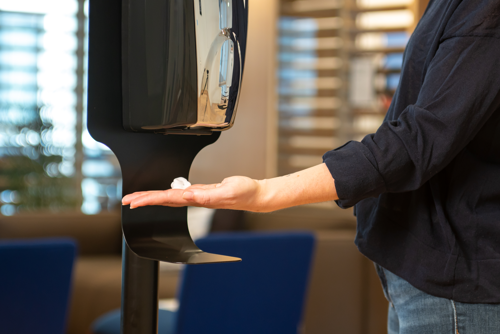
The COVID-19 pandemic has shown how easily infection can spread, especially when improper infection-control strategies are in place. In many homes, entire households quickly became infected after the virus entered the premises due to improper ventilation, close contact and sharing of household resources. Though, the rate of infection multiplies significantly in high-volume venues and settings.
This was remarkably true in education settings, as many schools were forced to shut down to isolate and deep clean during the pandemic's peak. While these numbers were predominant in primary and high school settings, university campuses host tens of thousands of students, placing them at significant risk.
The following blog investigates how students, teachers and university stakeholders can make small changes to their cleaning protocols to better control infections. It is important to note that while this blog is written in the context of the COVID-19 virus, all strategies and tactics mentioned will provide infection control against all viral infections. This includes but isn’t limited to Influenza, Norovirus, Meningitis and all other fast-spreading infections.
Make Ventilation a Priority
Air-borne infections can linger for hours and hours, even after an infected individual has left the premise. This is particularly true in environments with poor ventilation, including science labs with incorrect exhausts on university campuses. Working to open windows and doors to create consistent airflow can ensure that harmful germs and bacteria do not continue to grow in a lecture hall or classroom environment. Where a classroom may not have access to windows, investing in air filters can help remove harmful pathogens from the air.
It’s important to note that fans can promote positive ventilation, but they must be faced away from students. Otherwise, they are likely to push these harmful pathogens toward students.
Prioritising cleaning between lessons
While university-aged students are likely to better understand infection prevention compared to younger students, they may still accidentally cause infections to spread. Activities, such as sneezing and then touching a lecture table, can inadvertently cause bacteria to spread. Universities should consider budgeting more of their resources toward cleaning to guarantee that all desks, chairs and classroom touchpoints are cleaned between each class. While bacteria may still spread between an infectious student and their peers, this can prevent it from harming students from other disciplines.
Equipping all cleaning staff with HYGEN cleaning cloths and mops can certify that all bacteria are picked up from surfaces rather than moved across them. Having cleaners work alongside university timetables to clean rooms, when unoccupied, will remove any germs that could have continued growing and spreading.
Using the most innovative cleaning technology; these recommended cleaning supplies are guaranteed to reduce the risk of infections. As an offset positive effect, keeping these environments clean can boost the university's reputation, enrolments and revenue.
Give students the opportunity to implement infection control
As universities often service thousands of students at once, there are instances where cleaning staff will not have the capacity to remove germs before they transmit. However, this does not mean students will get sick. Providing students and teachers with mechanisms and devices that allow them to maintain the cleanliness and sanitisation of their campus can simultaneously reduce the chance of infection.
Mounting Surface Care Equipment in bathrooms can encourage patrons to wipe down toilet seats before sitting on them. This is particularly useful as many infections can transmit through human waste. For example, gastroenteritis is one of the most frequently transmitted in washrooms.
Other ways students can be encouraged to implement their own infection control include:

Teach online where possible
For morale purposes, not all classes should be taught online. However, moving some lessons to an online learning setting, especially those that would occur during peak university hours, can help students avoid infections. If a professor prefers to teach face-to-face, it is recommended they have online resources available for sick students or the immune-compromised. This allows students to still engage in the learning without putting the campus or their health at risk.
Larger institutes may have the capacity to decide between allocating physical and digital classtime. If that is the case, allowing students to choose their preference can keep attendance high without overcrowding classrooms and lecture halls.
Rubbermaid Commercial helps to reduce infections in all settings
The solutions and supplies provided by Rubbermaid Commercial all aim to reduce infection to create safer environments. No matter the size of a facility, campus or educational building, these education industry resources have been vigorously tried and tested to guarantee an optimum clean.
If you own, attend or work at a university, you can always contact the team to discover more about how to keep your premises safer, especially in the heart of flu season.